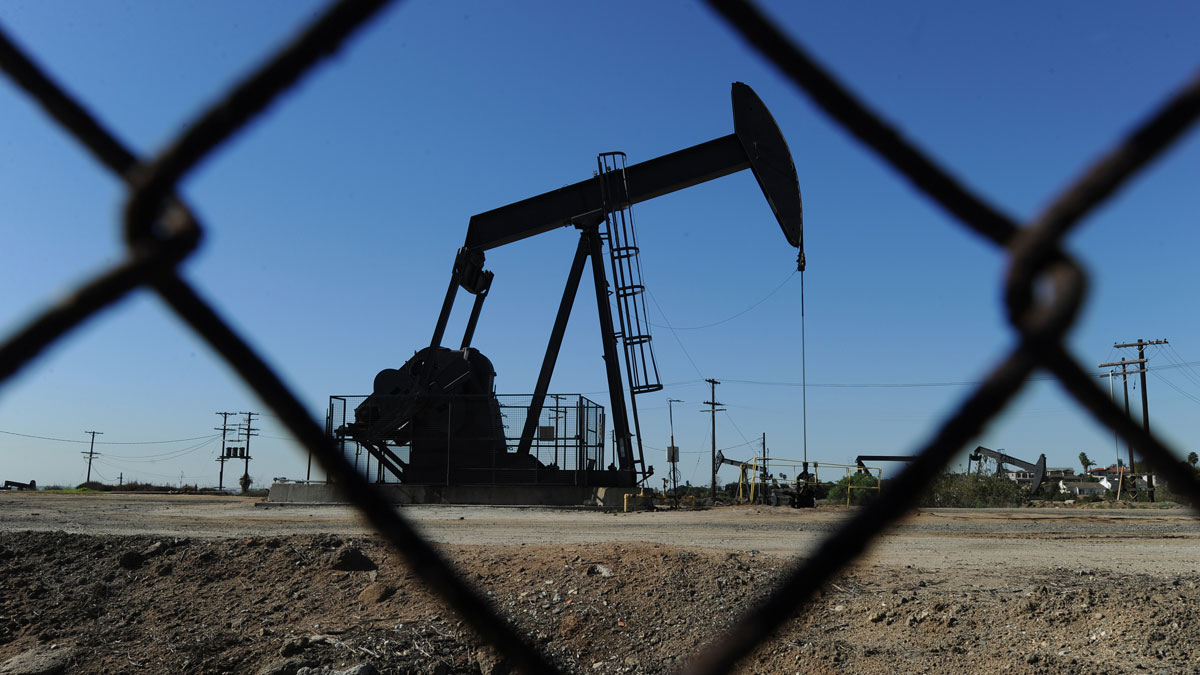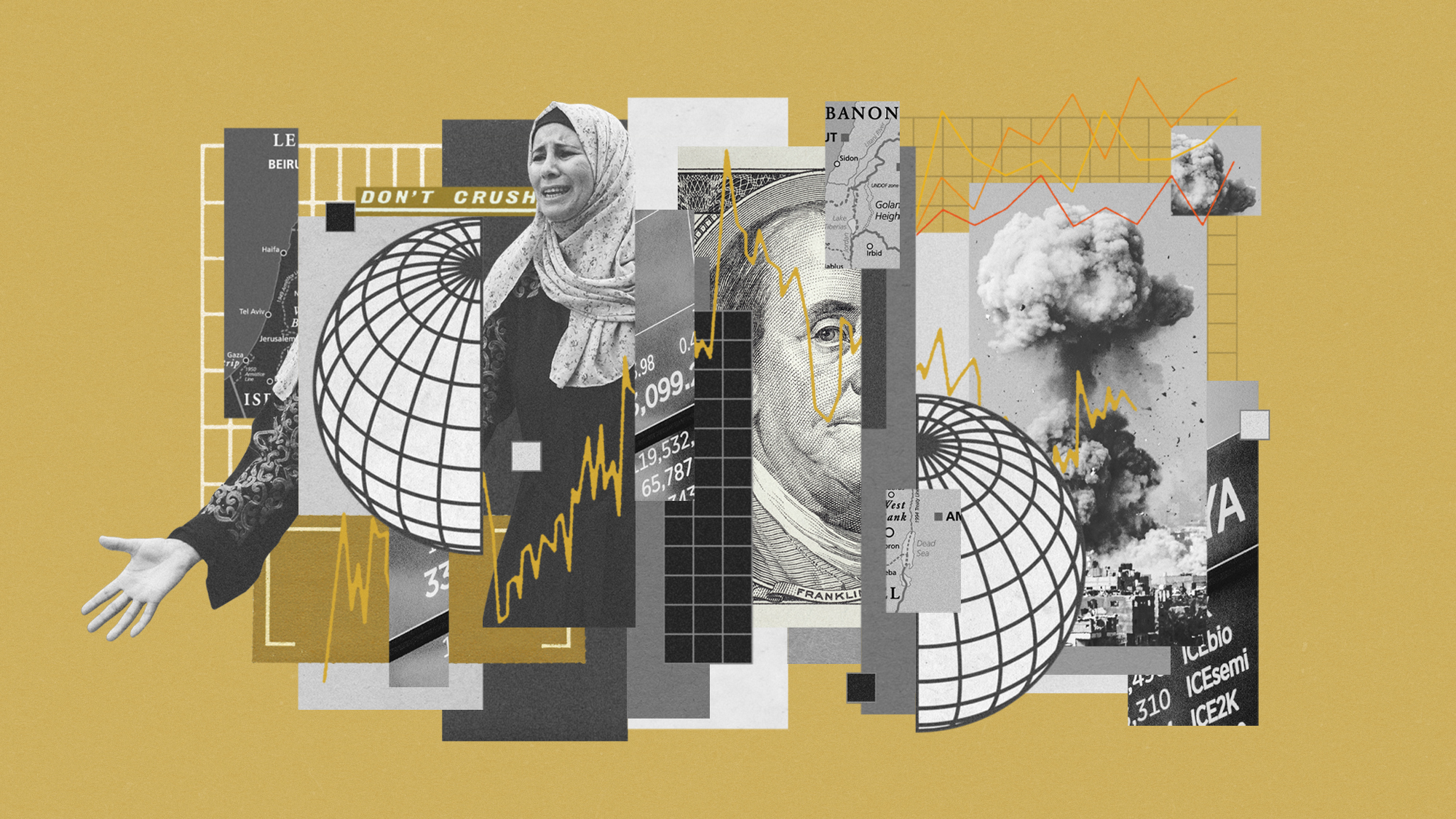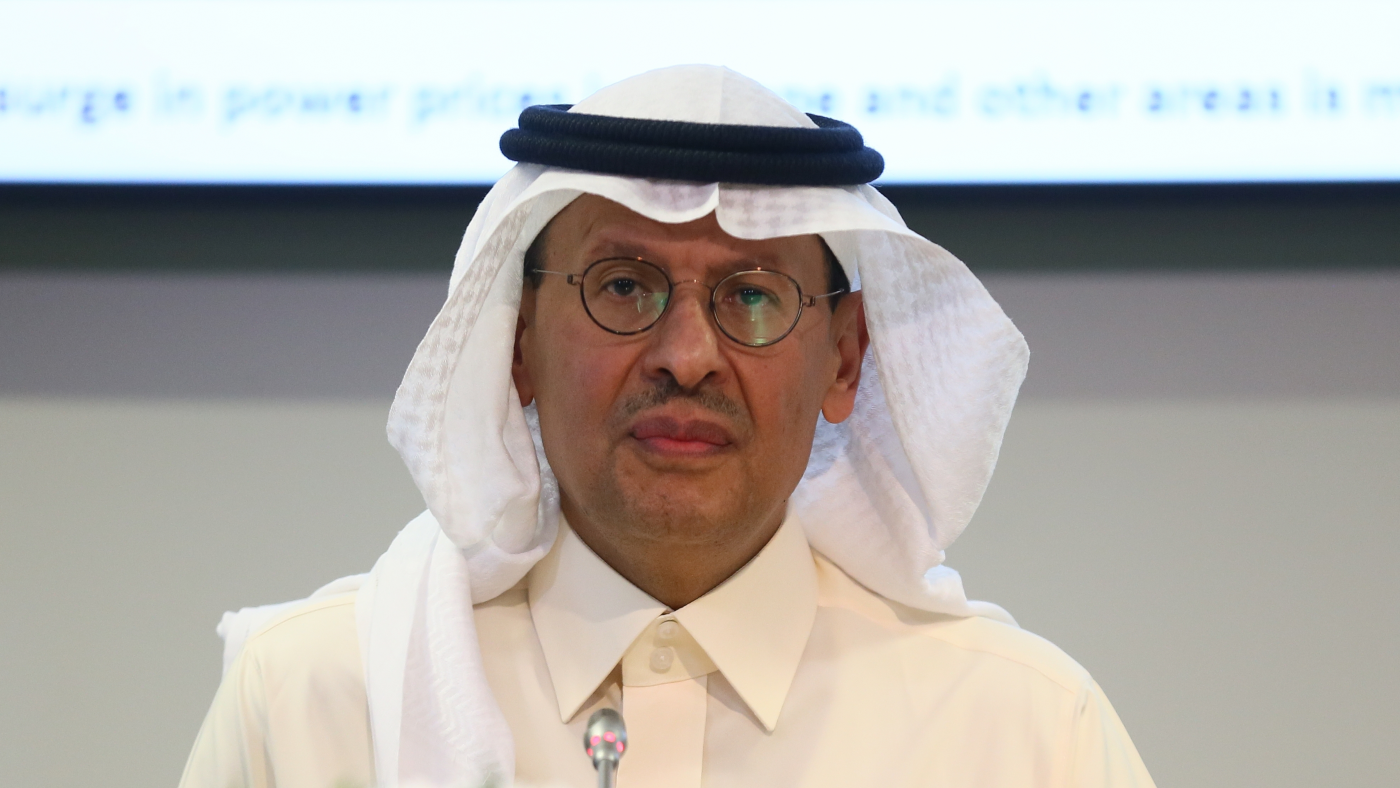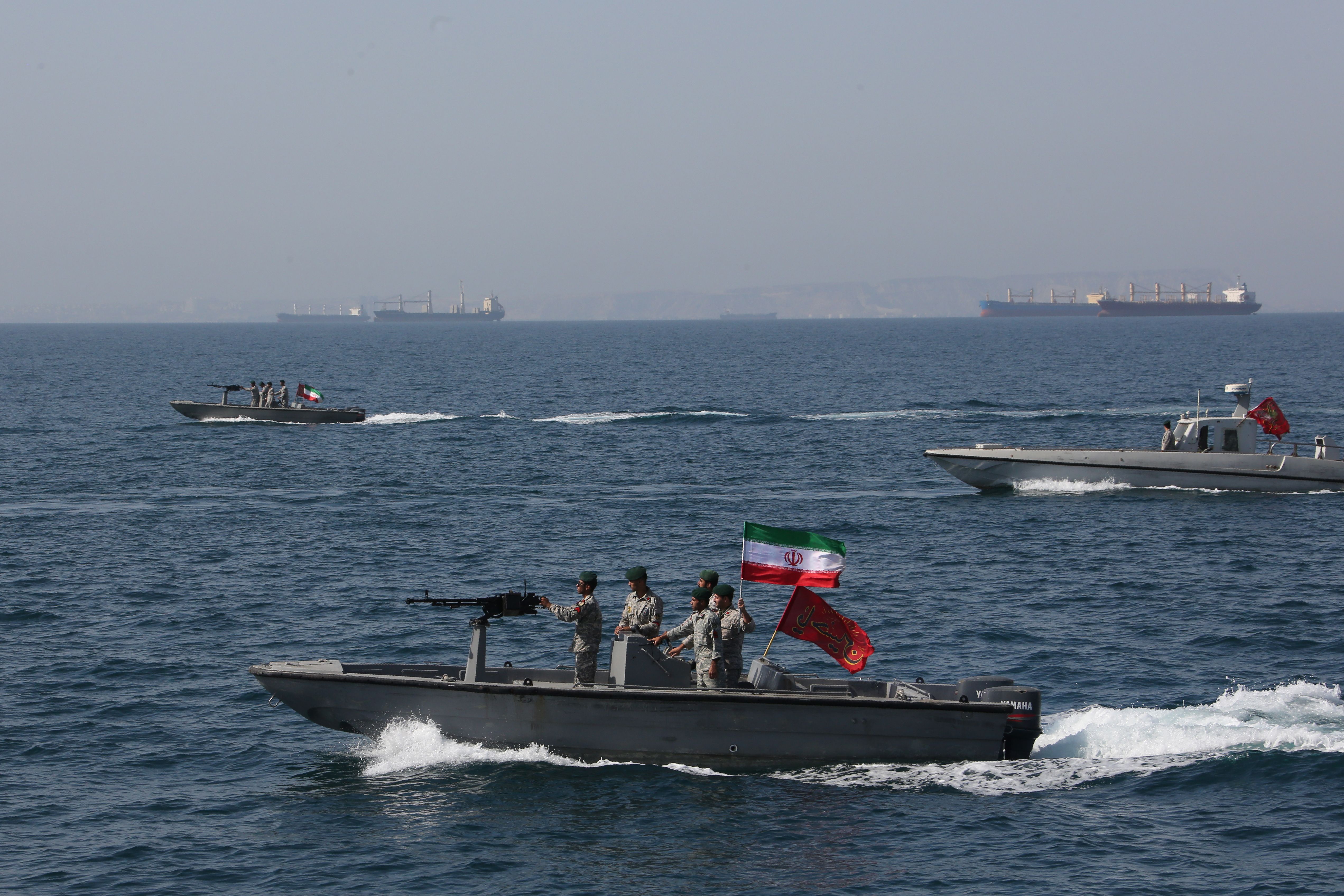Oil price posts two-year highs - but how long can it last?
Brent rose above $59 a barrel this week, its best third-quarter showing since 2004

Oil prices 'will not see significant recovery in 2016'
14 September
Oil prices are floundering again after their recent short-lived rally, as analysts make bearish predictions on supply. This morning they are headline back towards the mid-$40s range that is likely to result in widespread industry losses, .
International benchmark Brent crude fell overnight in Asia and is in the red again in London at around $47.50 a barrel, below the $49 mark at which production is, on average, loss-making in the North Sea. Since a recovery that persisted throughout the spring came to an abrupt end over the summer, prices have dipped as low as $42 and rarely held above $50.
The Week
Escape your echo chamber. Get the facts behind the news, plus analysis from multiple perspectives.

Sign up for The Week's Free Newsletters
From our morning news briefing to a weekly Good News Newsletter, get the best of The Week delivered directly to your inbox.
From our morning news briefing to a weekly Good News Newsletter, get the best of The Week delivered directly to your inbox.
Reuters notes that the latest dip came despite data from the US showing the number of active rigs drilling for oil fell marginally for the second consecutive week, with reserves falling, if only modestly, in five weeks out of the past seven.
This reflects a slowdown in US shale production, which is often unprofitable below $70. The Financial Times reports predictions that many US producers could go out of business as debt piles mount, which could ultimately provide a turning point for a stubbornly oversupplied market.
Many believe this slowdown will not come quickly enough to support a near-term recovery in prices. Investment banks Morgan Stanley and Macquarie told Reuters that a China slowdown and falling global car sales would continue to keep demand below supply for the foreseeable future, while Barclays said there was now consensus that "oil and gas prices are unlikely see a significant recovery in 2016".
The Daily Telegraph's Liam Halligan, however, contests the reliability of current oil forecasts as demand and supply are "subject to countless unfathomable factors". He in fact believes prices will recover quicker than expected, as US shale production could slow much faster than anticipated and Opec is likely to respond by finally easing its own output, having achieved its objective of protecting market share.
A free daily email with the biggest news stories of the day – and the best features from TheWeek.com
[[{"type":"media","view_mode":"content_original","fid":"84437","attributes":{"class":"media-image"}}]]
Oil prices 'to remain below $50 until end of 2016'
11 September
A persistent supply glut in the oil market is worse than had been estimated and will render much of the world's production loss-making until the end of 2016, according to a new analysis from Goldman Sachs.
It is the latest in a stream of bearish forecast from analysts, who have been recalibrating assessments made earlier this year that oversupply would ease and oil prices would recover after appearing to hit a low in January. Prices turned again in the summer and recently touched new six-year lows before settling around $50, where they have remained this week as equities markets have drifted.
Brent crude traded marginally lower on Thursday and is edging south again on Friday morning, with international benchmark Brent crude hovering around $48. An analysis earlier this week by the UK's oil and gas trade body estimated North Sea production makes a loss, on average, when prices dip below $49.30.
On that basis the industry will be alarmed by Goldman's central forecasts, which, says Bloomberg, have reduced the 2016 average price for Brent to $49.50 from a previous estimate of $62. It also predicts the US benchmark West Texas Intermediate will be below $45 throughout 2016, with its worst-case model putting prices as low as $20.
There had been hopes that the global supply imbalance might be beginning to turn, after a prediction that US output would be lower in the next 12 months than previously estimated. Comments from Opec has also appeared to suggest that the 12-nation cartel might be prepared to end a turf war that has led it to maintain high supplies even as low prices squeeze members' economies.
That now seems unlikely. The Times reports that a request from Venezuela's president, Maduro Chavez, for a special meeting was spurned by Saudi Arabia. Meanwhile, the steady progress of the Iranian nuclear deal through the US congress looks set to herald an increase in gulf oil exports next year.
Goldman therefore predicts that the US shale industry will bear the brunt of the slowdown, bringing to an end a US energy boom as producers increasing shut up shop. It says that for the oil surplus to be erased by the end of 2016, US output will "need to decline by 585,000 barrels a day next year and other non-Opec production will need to fall by 220,000 barrels a day".
Oil prices fall after a bearish forecast for 2016
10 September
Oil prices dipped again on Thursday and international benchmark Brent crude slipped below $48, as fragile sentiment was rocked once more by another report that cut forecasts for prices into 2016.
The US Energy Information Administration (EIA) said that the US benchmark West Texas Intermediate would average $49.23 this year, almost $0.40 a barrel below a previous prediction, essentially lowering hopes of a recovery in the final months, according to Marketwatch. The forecast for Brent crude was reduced by a similar amount to just above $54. Estimates for average prices in 2016 were also cut by up to $1 a barrel.
The oil price dip comes ahead of the release of data by the EIA later today which is "expected to show a rise in US crude supplies". Plunging machinery orders in Japan and tumbling producer prices in China have also "fuelled concerns that growth could be grinding to a halt" in key growth economies, according to Reuters.
Brent fell to just above $47 a barrel at one point and it remains below $48 a barrel in London this morning, which a report from the UK oil and gas trade body has revealed would make most production loss making. West Texas Intermediate currently remains below the psychologically important $45 level.
There were, though, continuing signs that prices could begin to recover in the medium term. Further evidence also emerged that brutally low prices were likely to take a toll on production. The EIA forecast US production would be 9.2 million barrels a day this year, down from a previous estimate of 9.4 million barrels, with the 2016 estimate cut by 1.5 per cent to 8.8 million barrels a day.
Analysts note that this is unlikely to feed through to higher prices in the short term, as sentiment remains too brittle and traders are on the lookout for bearish signals. Richard Hastings, macro strategist at Global Hunter Securities, told Marketwatch that prices were "getting ready to dip lower on any whiff of negativity".
Oil price: how North Sea producers are making a loss
9 September
The devastating effects of the collapse in oil prices for producers in the North Sea have been laid bare by a new report from the UK oil and gas trade body, which estimates 65,000 jobs have been lost and billions of pounds of further cuts are looming. Much of the current production is also making a loss.
The report from Oil and Gas UK paints a bleak picture for drillers in the face of a plunge in prices of around 60 per cent over the past year. It says the industry will have to contract further and "change the way business is done" to weather what it predicts will be a "sustained" lull.
Ahead of a biennial meeting of executives in Aberdeen today, the Financial Times notes the report's findings that:
- jobs supported across the supply chain have fallen from 440,000 in to 375,000, a drop of 65,000;
- spending on projects, which peaked at £14.8bn last year, is expected to fall to £11bn this year and up to £12bn in savings will be made over the next three years; but
- production is rising thanks to projects undertaken when prices were higher coming "on-stream", putting further pressure on prices.
According to the BBC's Scotland business editor Douglas Fraser, this is because oil has fallen from around $115 in the summer of 2014 to less than $50 now. He points to figures in the report that show it costs £17.80 to extract the average barrel of Brent crude from the North Sea, plus £13.60 in other infrastructure and development costs. "Translate that into dollars and the combined cost is $49.30," he says.
Brent has been below that level for much of the late summer period and even as low as $42. It is currently hovering around this threshold. According to Reuters it recorded a modest rise amid better news from China, one of the world's big oil consumers. This means that much of the production, especially of more mature fields, remains unprofitable.
Oil and Gas UK says it expects "capacity to be reduced further" and that an expected consolidation may see many struggling companies bought out once sellers learn to become "realistic enough in their price demands".
Oil price: North Sea projects bear fruit – and crunch prices
8 September
In a market already flooded with too much oil, news that legacy projects signed when prices – and prospects – were much stronger are going to begin feeding into increased output is only likely to add to the bearish sentiment.
International benchmark Brent crude, which is based on oil grades shipped from the North Sea, fell yesterday to as low as $47.64 a barrel in London, the lowest it has been since the end of August. On Tuesday morning it remained rooted at around $48 a barrel, below the $50 threshold at which it has recently held firm despite the wider market volatility.
The cause of the slide was a report from Bloomberg, based on an analysis of loading data across the sector, that revealed North Sea output will hit a three-year high in October. Supplies from Nigeria are also set to reach levels not seen for three and a half years, as production is restarted following a shutdown caused by a pipeline leak.
The International Energy Agency confirmed the rise in production and said it reflected "projects… that were sanctioned with oil prices above $100 a barrel" coming online. It coincides with the annual refinery maintenance season, when demand falls as less oil can be processed, and comes at the end of a year in which 5,500 jobs have already been lost in the North Sea.
This reflects big energy companies pulling investment into exploration, part of a global trend as the majors attempt to defend their dividends and share prices. The Financial Times says a report from consultancy firm Wood Mackenzie shows that around $200bn of projects have been shelved already, with more cutbacks likely as the market remains well stocked, China growth slows and Iran prepares to ramp up production following the end of sanctions later this year or early next.
In time, of course, the result will be that "output growth should fall" and there will be "a sharp decline in the number of active drilling rigs", all of which would begin to push prices higher. Motorists enjoying lower fuel prices need not worry just yet, however. "With Opec intent on protecting its franchise of low-cost, high-margin barrels", the supply versus demand balance still has some way to go to bring sustained upward pressure.
Oil price: UK not immune to effects of price collapse
07 September
The effects of lower oil prices on the industry and the countries that depend on it are beginning to take hold, but there are signs that falling revenues could finally reduce production.
Since a sharp decline earlier in the summer, international benchmark Brent crude has been trading at around half the level it was a year ago, eating heavily into profit margins and turning exploration into a loss-leading exercise. Prices are moving lower again on Monday, dropping by around one per cent and hovering around $49 a barrel.
The consequences are mounting. Venezuela and Nigeria are on the brink of bankruptcy; Russia is facing a fresh financial crisis; and even in the UK and US there are risks of large-scale oil job losses amid a capital flight.
The Financial Times reports that the US shale energy sector, which in recent years has enjoyed a major boom that contributed to the current supply glut, is likely to face a wave of "bankruptcies and restructurings" as debts mount and liquidity taps are turned off.
Costs to fund US production in 2015 so far have exceeded "cash from operations" by £32bn, close to the figure for the whole of 2014. Over five years, net debt across the industry has risen from around $81bn to $169bn – and a revaluation of borrowings in the wake of reduced price forecasts for the months ahead is due in October. Share sales to raise cash have fallen from £10.8bn in the first quarter to just $1bn for July and August; bond sales have plummeted from $6.5bn a month to $1.7bn.
In the North Sea the FT cites official warnings that areas of the industry could be "abandoned" unless companies adopt new practices and work more closely together. One rig maker has already announced 800 of its 1,500 jobs could go, according to The Times, as work dries up.
For those feeling the squeeze, the light at the end of the tunnel could be that the pressure is finally be beginning to reduce output. Reuters notes a fall in the number of rigs drilling across the US in data published on Friday, which if it continued could be a "constructive development" for prices, especially if it was matched by output from Opec.
-
 Political cartoons for December 16
Political cartoons for December 16Cartoons Tuesday’s editorial cartoons include calibrating fonts, Christmas classics, and more
-
 Cryptocurrency and the future of politics
Cryptocurrency and the future of politicsIn The Spotlight From electoral campaigns to government investments, crypto is everywhere and looks like it’s here to stay
-
 Ssh! UK libraries worth travelling for
Ssh! UK libraries worth travelling forThe Week Recommends From architectural delights to a ‘literary oasis’, these are some of the best libraries around the country
-
 How might the Israel-Hamas war affect the global economy?
How might the Israel-Hamas war affect the global economy?Today's Big Question Regional escalation could send oil prices and inflation sky-high, sparking a worldwide recession
-
 Recent mega-mergers could signal a turning point for the US oil industry
Recent mega-mergers could signal a turning point for the US oil industryTalking Point Both Chevron and Exxon have recently spent billions to acquire smaller oil companies
-
 Has Saudi Arabia lost control of oil prices?
Has Saudi Arabia lost control of oil prices?Today's Big Question Kingdom goes it alone to cut production, risking tension with US and reigniting cooling inflation in Europe
-
 US angered by Opec+ oil cut
US angered by Opec+ oil cutSpeed Read Energy prices to rise further as producers slash supply by two million barrels a day
-
 Global oil demand forecast lowered for 2020 and 2021
Global oil demand forecast lowered for 2020 and 2021Speed Read IEA report says jet fuel demand remains the major source of weakness
-
 Are US-Iran tensions flaring again?
Are US-Iran tensions flaring again?In Depth Trump threatens military action over Twitter
-
 Can a deal be struck to raise oil prices?
Can a deal be struck to raise oil prices?In Depth Opec+ will convene today over video link in a bid to boost crude
-
 What do negative oil prices mean?
What do negative oil prices mean?In Depth Perfect storm of oversupply and storage shortages sees producers paying to get rid of US crude